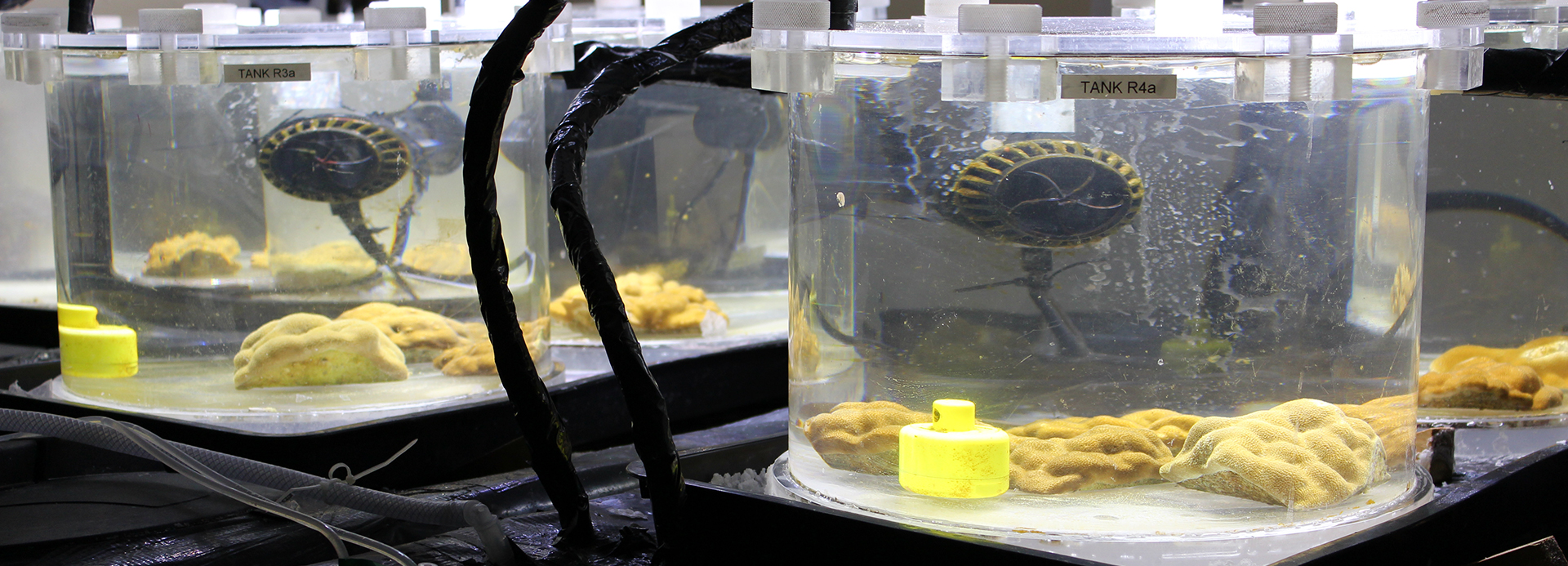Facilities

Underpinning the School’s research are outstanding analytical facilities supported by full-time technicians. These allow for the detailed characterization of natural (and synthetic) materials, culturing of micro and macro organisms in extreme environments, and geological and geophysical field deployment.
Biomineralisation
- Culturing of marine calcareous organisms under past and future CO2 and temperature conditions.
- Characterisation of dissolved inorganic carbon system in seawater (DIC and total alkalinity analysis)
- Inorganic precipitation of calcium carbonates in controlled environments
Experimental petrology
- Experimental facility for mineralogy and petrology at high temperatures and pressures, using a Rockland 250-ton piston cylinder press.
Geobiology and culturing
- The cultivation, manipulation, and molecular investigation of micro-organisms, including under anaerobic, phototrophic, and lithotrophic conditions mimicking early Earth ecosystems
Geochronology
- Dating of geological materials via LA-(MC)-ICPMS
- Automated readers for OSL/TL dating
- Dendrochronology
- Geochemistry labs for cosmogenic sample prep
- Experimental facilities for radio-/cathodo-/thermo-luminescence.
Geophysics and field deployment
- A broad equipment base for surface and near-surface terrestrial and marine geophysics using ssSONAR, GPR, ER, EP, IR, laser, seismic and GPS sensors.
- A suite of survey, hydrological and soil sampling equipment, including a 21-metre research vessel, eddy covariance towers and greenhouse gas analysers.
Isotope and trace element geochemistry
- Two class 100 clean rooms
- Three MC-ICPMS and two quadropole ICP-MS with solution, GC, and laser ablation introduction systems for the analysis of trace metal concentrations and isotope ratios.
- Two Thermo Mat-253 IRMS, one with a fluorination line, and Delta plus XP IRMS with peripherals for C-N-O-H gas chromatography.
- IC, ICP-OES.
Luminescence Dating Laboratories
The luminescence dating laboratories in the School of Earth and Environmental Sciences, University of St Andrews, are comprised of a dedicated sample preparation room and the luminescence laboratory. Instrumentation includes:
- 2 Risø TL-OSL DA-12 readers and 1 Risø TL-OSL DA-20 reader
- an array of alpha and beta counters,
- a midose Solutions μdose unit
- 2 Ortec Micronomads with 2×2” NaI detectors
- 1 GF Instruments Gamma Surveyor Vario with a 2×2” NaI detector
The Luminescence Dating Laboratories benefit from close links within the School to the St Andrews Isotope Geochemistry (StAIG) laboratories and the Faculty for the Luminescence of Minerals, and with other research institutes, including the Environmental Radioactivity Laboratory in the School of Biological and Environmental Sciences at the University of Stirling.
Microscopy, spectroscopy and imaging
The School operates a joint electron microscopy facility with the School of Chemistry. This facility comprises:
- A Jeol JXA-iSP100 electron probe micro-analyser with 5WDS spectrometers, an EDS spectrometer and BSE, SE, and CL detectors
- A Jeol JSM-F100 field emission gun (FEG) electron microscope fitted with a Soft X-ray Emission Spectrometer (SXES), EDS, BSE and SE detectors
- A Jeol JSM-IT200 SEM with EDS, BSE, SE detectors
- A Renishaw Invia Qontor Raman Microscope with 532, 633 and 785 nm lasers
This facility offers a unique capability for high resolution non-destructive analysis of materials including the light elements from Li to F. Additional access to TEM facilities and a FEI Scios DualBeam FIB SEM is available through the School of Chemistry’s electron microscopy unit.
The School additionally operates
- A Spectro XEPOS HE ED-XRF for routine whole rock element analysis
- A Philips XRD for phase ID of crystalline material in powdered samples
Rock Magnetics
The Magnetics, Minerals, Magma and Ore “M3Ore” Laboratory at St Andrews is designed to facilitate industry and academic studies on the structure of igneous rocks and the ore deposits that occur within them. Rock magnetism can also be used for a wide range of applications including ore and alteration mineral classification and modelling, soil pollution and contamination studies, sediment characterisation and archaeological palaeomagnetic investigations. The M3Ore lab facilitates rock magnetic characterisation experiments, anisotropy measurements (AMS, AARM, AIRM) and palaeomagnetic experiments as well as a range of hyperspectral and petrographic studies. One distinguishing feature of the facility is the capability to measure both in-phase and out of phase magnetic susceptibility, this includes temperature dependence, field dependence and anisotropy of magnetic susceptibility measurements. The facility also uses a combination of field deployable hand held and drone mounted magnetic, spectral and hyperspectral devices to characterise the silicate, oxide and sulphide mineralogy of ore deposits associated with igneous intrusions.
M3Ore offers a full project design and interpretative service if required.
Facilities include the following apparatus:
- KLY5-a Kappabridge with 3D rotator (2018)
- CS4 furnace and CS-L cryostat (2018)
- MMLFC shielded room (2020)
- JR6a spinner magnetometer (2020)
- MMTDSC Super Cooled Thermal Demagnetizer (2020)
- LDA5 AF Demagnetizer and PAM1 anhysteretic and pulse magnetizer (2020)
- Molspin Shielded demagnetiser (2000)
- Molspin magnetometer (2000)
- MMPM 10 9 Tesla Pulse Magnetiser (2000)
- Two petrol powered field coring drills and a lab drill press (2017)
- Terraspec Halo hand held full-range spectrometer (2017)
- Suite of drones with photogrammetry and spectral imaging capabilities
